Volume 1, 2022
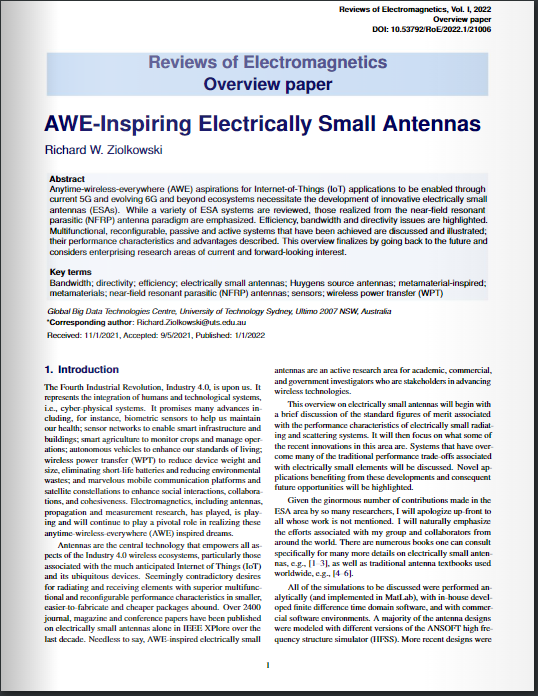
OVERVIEW
AWE-Inspiring Electrically Small Antennas
Author: Richard W. Ziolkowski
Abstract: Anytime-wireless-everywhere (AWE) aspirations for Internet-of-Things (IoT) applications to be enabled through current 5G and evolving 6G and beyond ecosystems necessitate the development of innovative electrically small antennas (ESAs). While a variety of ESA systems are reviewed, those realized from the near-field resonant parasitic (NFRP) antenna paradigm are emphasized. Efficiency, bandwidth and directivity issues are highlighted. Multifunctional, reconfigurable, passive and active systems that have been achieved are discussed and illustrated; their performance characteristics and advantages described. This overview finalizes by going back to the future and considers enterprising research areas of current and forward-looking interest.
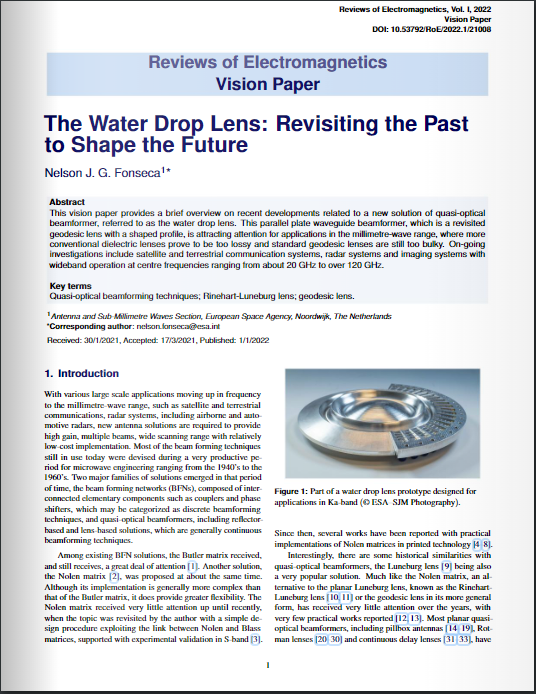
VISION
The Water Drop Lens: Revisiting the Past to Shape the Future
Author: Nelson J. G. Fonseca
Abstract: This vision paper provides a brief overview on recent developments related to a new solution of quasi-optical beamformer, referred to as the water drop lens. This parallel plate waveguide beamformer, which is a revisited geodesic lens with a shaped profile, is attracting attention for applications in the millimetre-wave range, where more conventional dielectric lenses prove to be too lossy and standard geodesic lenses are still too bulky. On-going investigations include satellite and terrestrial communication systems, radar systems and imaging systems with wideband operation at centre frequencies ranging from about 20 GHz to over 120 GHz.
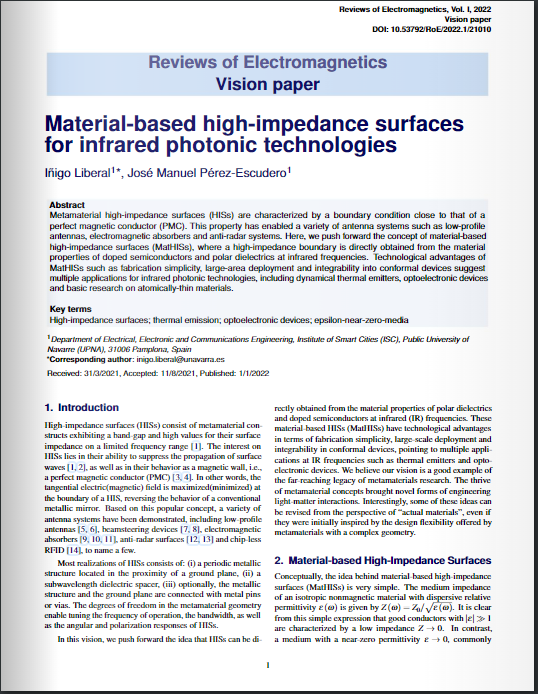
VISION
Material-based high-impedance surfaces for infrared photonic technologies
Author: Íñigo Liberal and José Manuel Pérez-Escudero
Abstract: Metamaterial high-impedance surfaces (HISs) are characterized by a boundary condition close to that of a perfect magnetic conductor (PMC). This property has enabled a variety of antenna systems such as low-profile antennas, electromagnetic absorbers and anti-radar systems. Here, we push forward the concept of material-based high-impedance surfaces (MatHISs), where a high-impedance boundary is directly obtained from the material properties of doped semiconductors and polar dielectrics at infrared frequencies. Technological advantages of MatHISs such as fabrication simplicity, large-area deployment and integrability into conformal devices suggest multiple applications for infrared photonic technologies, including dynamical thermal emitters, optoelectronic devices and basic research on atomically-thin materials.
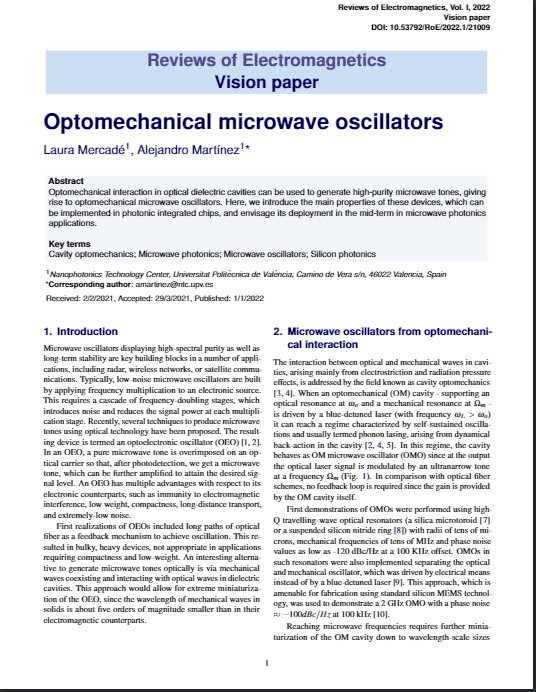
VISION
Optomechanical Microwave Oscillators
Author: Laura Mercadé and Alejandro Martínez
Abstract: Optomechanical interaction in optical dielectric cavities can be used to generate high-purity microwave tones, giving rise to optomechanical microwave oscillators. Here, we introduce the main properties of these devices, which can be implemented in photonic integrated chips, and envisage its deployment in the mid-term in microwave photonics applications.
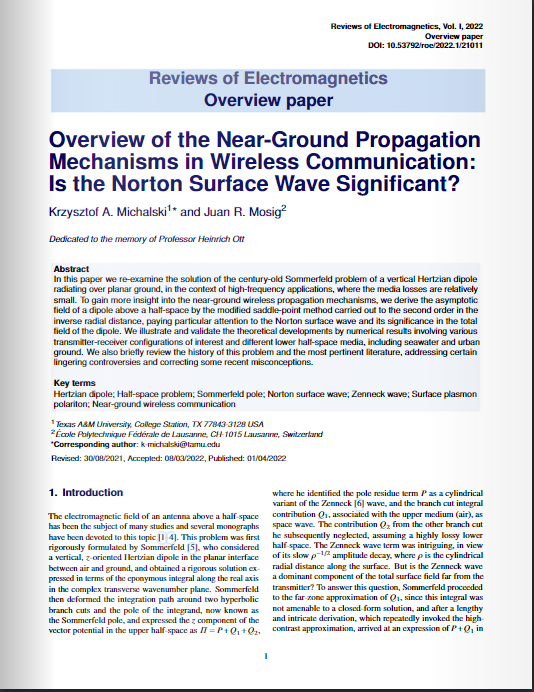
OVERVIEW
Overview of the Near-Ground Propagation Mechanisms in Wireless Communication: Is the Norton Surface Wave Significant?
Author:
Krzysztof A. Michalski and Juan R. Mosig
Abstract: In this paper we re-examine the solution of the century-old Sommerfeld problem of a vertical Hertzian dipole radiating over planar ground, in the context of high-frequency applications, where the media losses are relatively small. To gain more insight into the near-ground wireless propagation mechanisms, we derive the asymptotic field of a dipole above a half-space by the modified saddle-point method carried out to the second order in the inverse radial distance, paying particular attention to the Norton surface wave and its significance in the total field of the dipole. We illustrate and validate the theoretical developments by numerical results involving various transmitter-receiver configurations of interest and different lower half-space media, including seawater and urban ground. We also briefly review the history of this problem and the most pertinent literature, addressing certain lingering controversies and correcting some recent misconceptions.
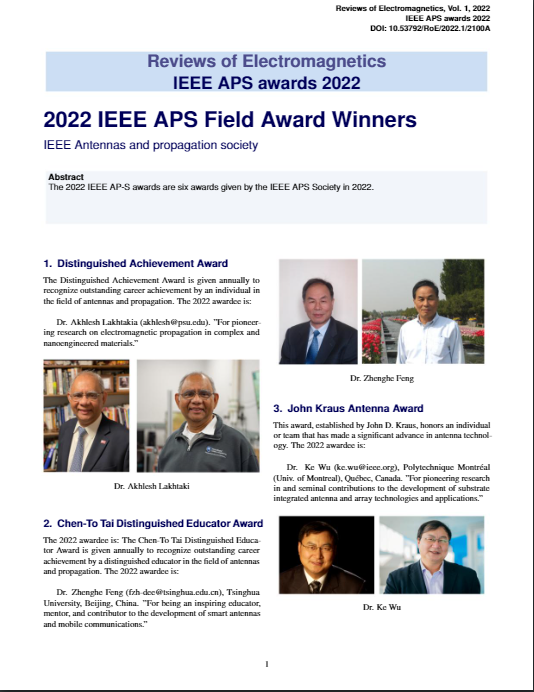
2022 IEEE APS Field Award Winners
Author:
The IEEE Antennas and Propagation Society
The 2022 IEEE AP-S awards are six awards given by the IEEE APS Society in 2022.
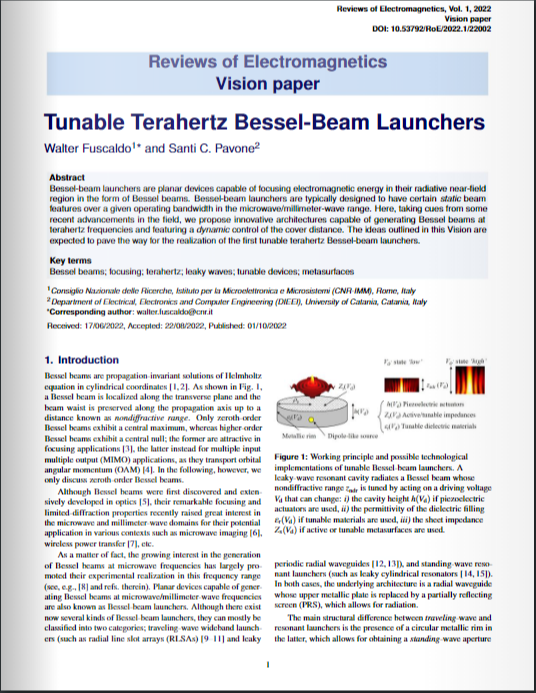
VISION
Tunable Terahertz Bessel-Beam Launchers
Authors:
Walter Fuscaldo and Santi C. Pavone
Abstract: Bessel-beam launchers are planar devices capable of focusing electromagnetic energy in their radiative near-field region in the form of Bessel beams. Bessel-beam launchers are typically designed to have certain static beam features over a given operating bandwidth in the microwave/millimeter-wave range. Here, taking cues from some recent advancements in the field, we propose innovative architectures capable of generating Bessel beams at terahertz frequencies and featuring a dynamic control of the cover distance. The ideas outlined in this Vision are expected to pave the way for the realization of the first tunable terahertz Bessel-beam launchers.
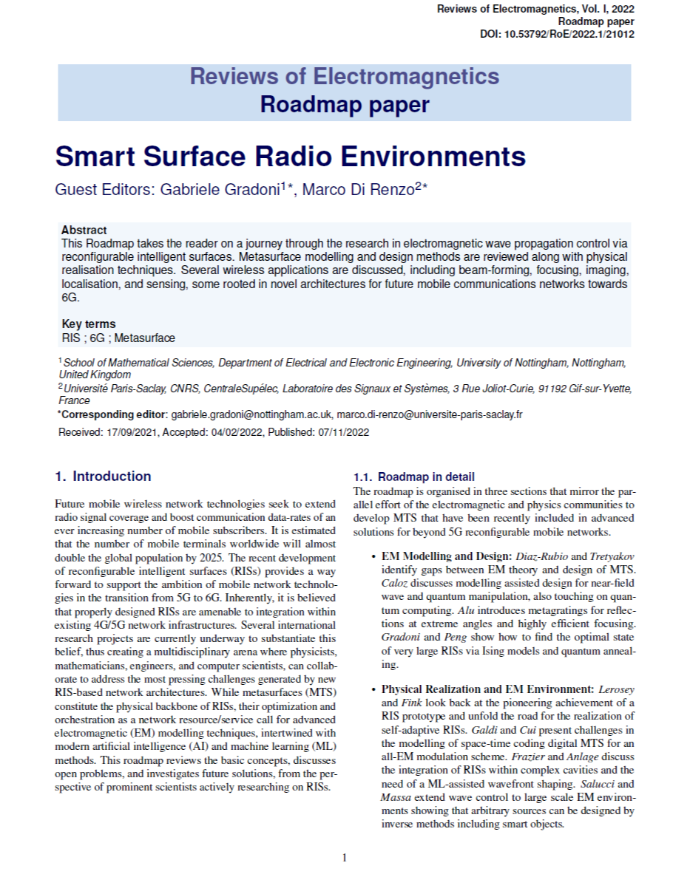
ROADMAP
Smart Surface Radio Environments
Guest Editors:
Gabriele Gradoni and Marco Di Renzo
Abstract: This Roadmap takes the reader on a journey through the research in electromagnetic wave propagation control via reconfigurable intelligent surfaces. Metasurface modelling and design methods are reviewed along with physical realisation techniques. Several wireless applications are discussed, including beam-forming, focusing, imaging, localisation, and sensing, some rooted in novel architectures for future mobile communications networks towards 6G.
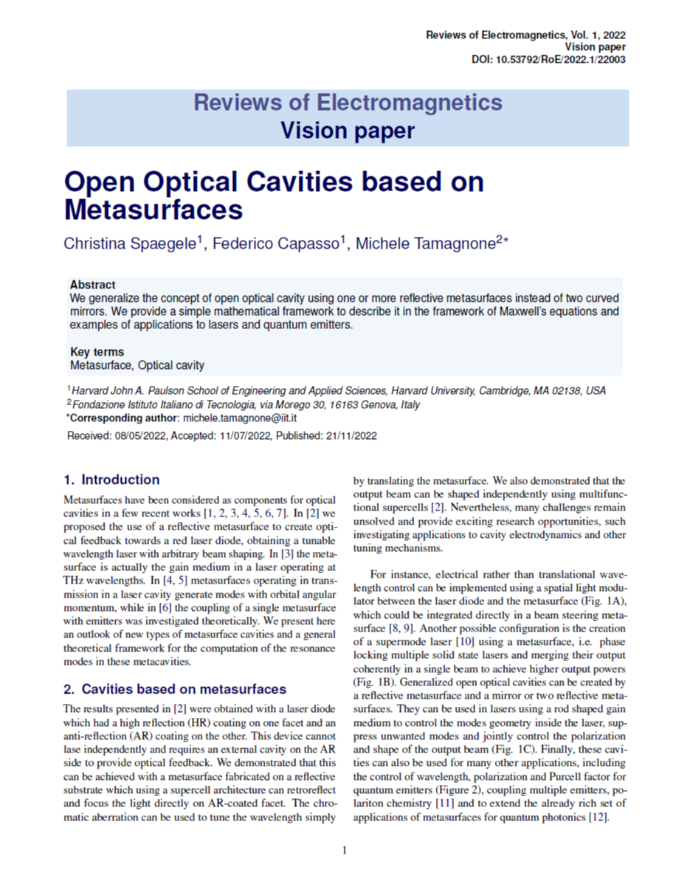
VISION
Open Optical Cavities based on Metasurfaces
Authors:
Christina Spaegele, Federico Capasso and Michele Tamagnone
Abstract: We generalize the concept of open optical cavity using one or more reflective metasurfaces instead of two curved mirrors. We provide a simple mathematical framework to describe it in the framework of Maxwell’s equations and examples of applications to lasers and quantum emitters.